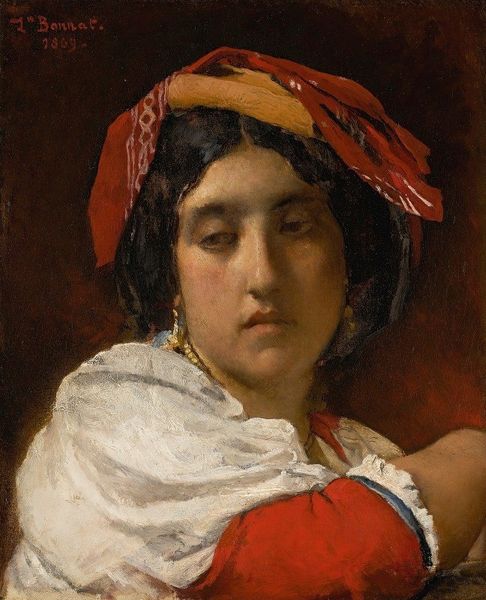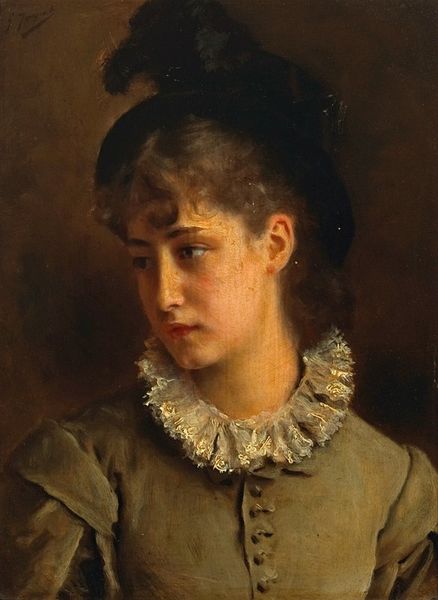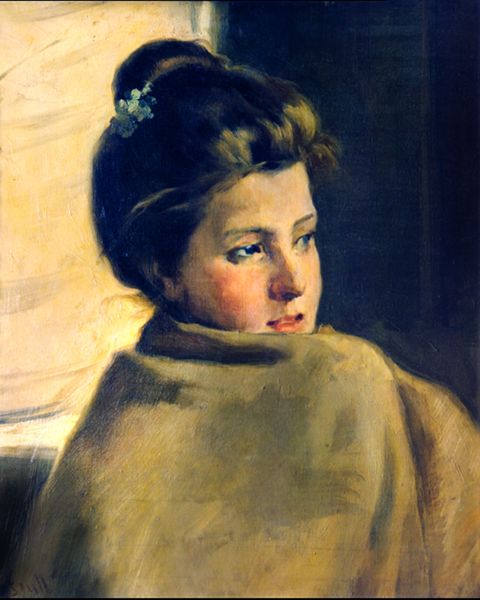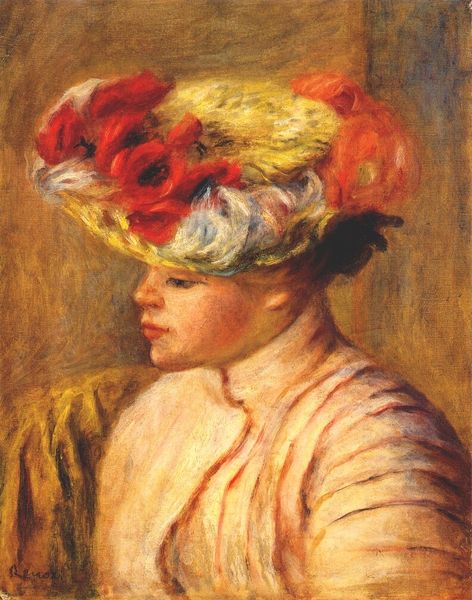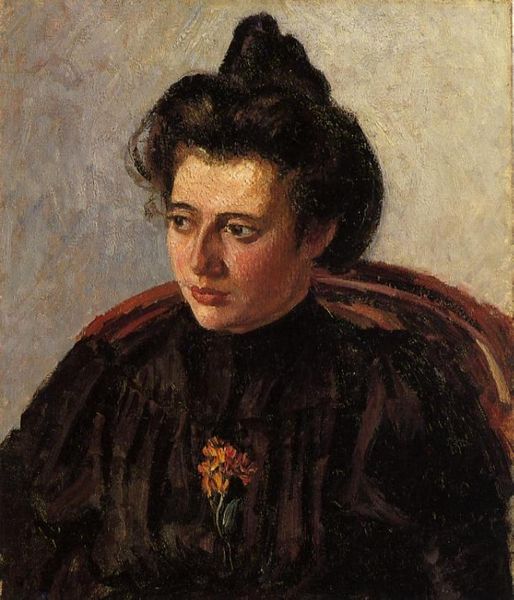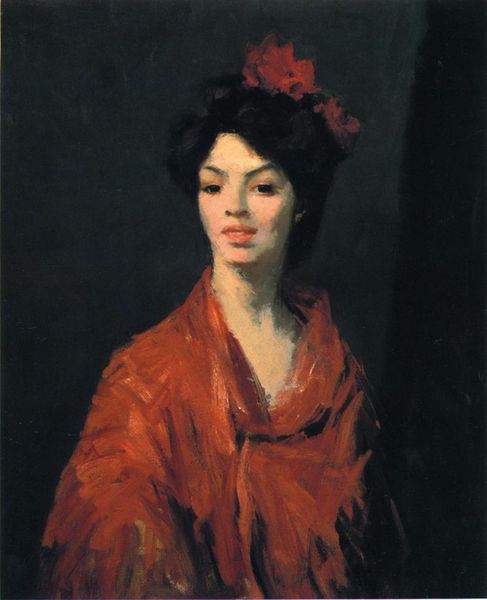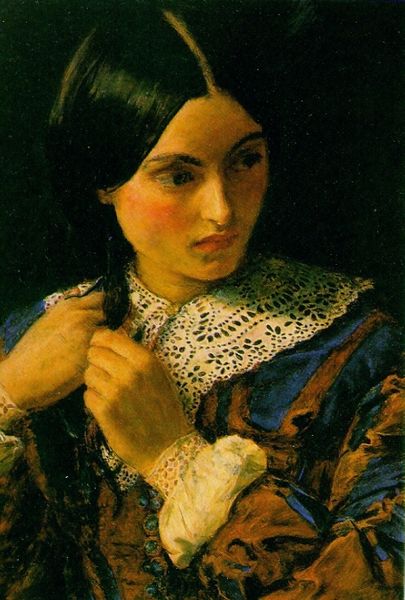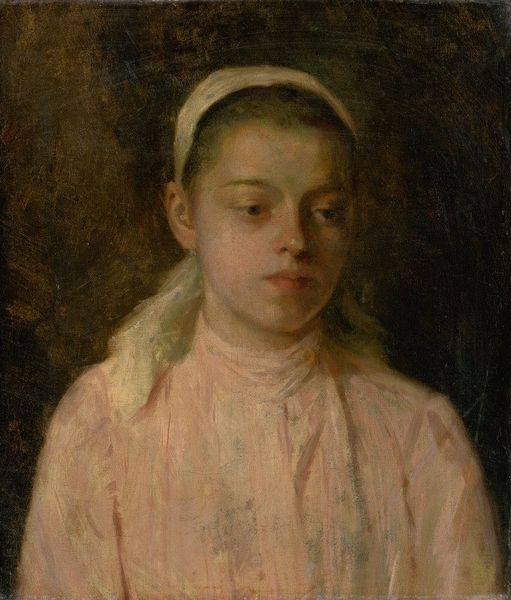
Margaret in Skating Costume 1871
0:00
0:00
thomaseakins
Philadelphia Museum of Art, Philadelphia, PA, US
Dimensions: 51.1 x 61.27 cm
Copyright: Public domain
Editor: This is Thomas Eakins' "Margaret in Skating Costume," painted in 1871 using oil paints. It's striking how somber Margaret appears, despite the implied activity. What stands out to you in this portrait? Curator: I’m drawn to the socio-historical context Eakins creates. Notice how the portrait rejects the typical conventions of idealized beauty in art. Eakins presents Margaret with a frank realism, perhaps mirroring a shift towards valuing authenticity over embellishment in American portraiture at the time. Editor: So, it's a conscious rejection of traditional portraiture? Curator: Partly. It also begs the question: what's the function of a portrait? Was it merely to flatter the subject, or could it serve a more profound purpose? Eakins seems to use portraiture to capture an individual's character, a slice of real life. Think about how industrialization and burgeoning social consciousness impacted artistic aims. The artist arguably becomes a recorder of reality. Editor: The term "realism" makes sense then. Curator: Precisely. Eakins challenged the artistic establishment's preference for romanticized imagery, instead depicting everyday life with a startling candor. What might audiences in Philadelphia have thought about his unflinching portrayals? How might the museum context affected people's perspective on his artistic value? Editor: That's something I never considered, and it provides a lot to consider, that Eakins challenged prevailing artistic norms to highlight realism and authentic representation! Curator: Exactly. Examining "Margaret in Skating Costume" in this light deepens our understanding of not only Eakins' individual genius but also broader cultural currents shaping the art world in his era.
Comments
No comments
Be the first to comment and join the conversation on the ultimate creative platform.


